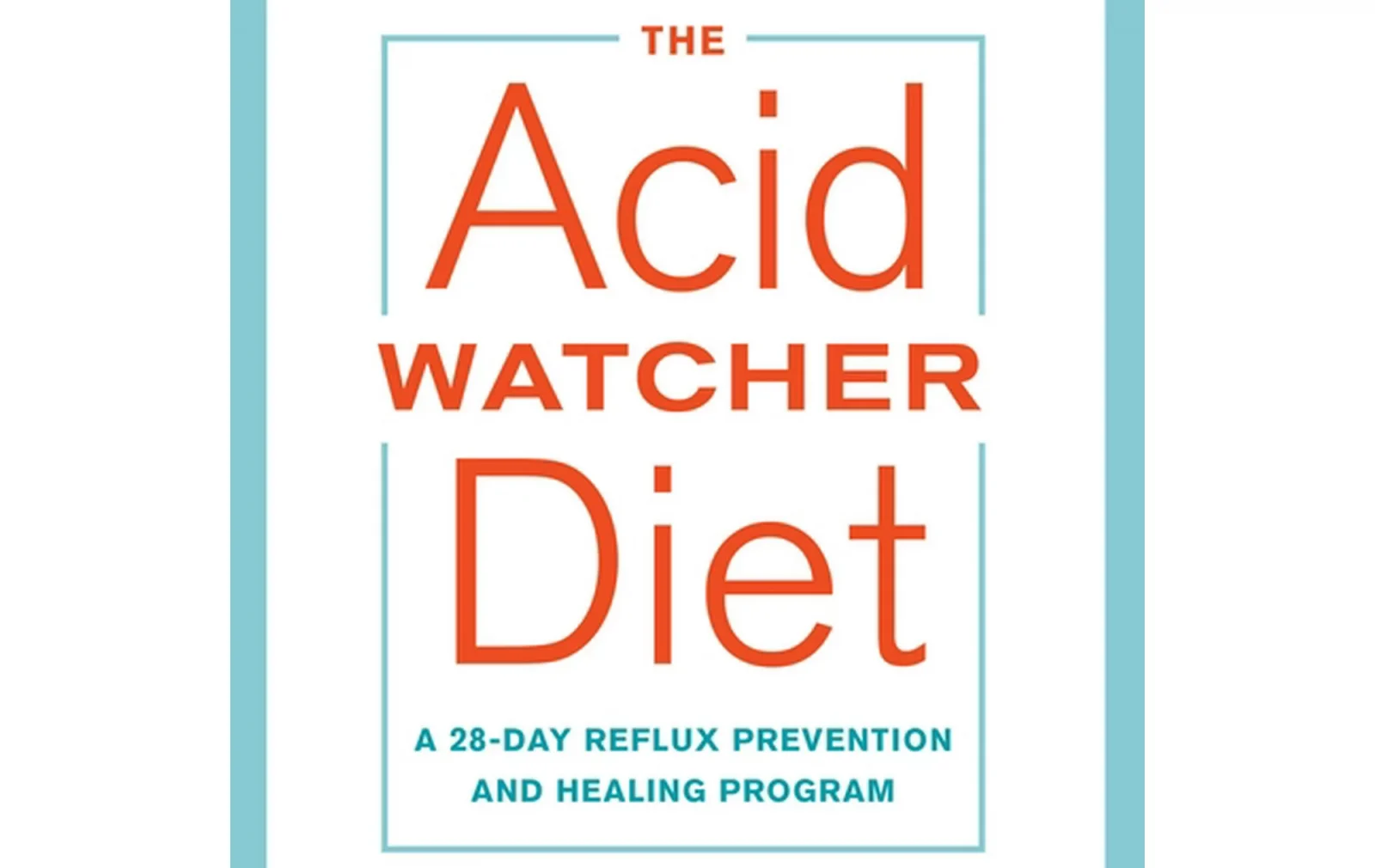The Acid Watcher Diet is a popular eating plan designed by Dr. Jonathan Aviv to address acid reflux and inflammation issues plaguing many individuals. This two-phase diet focuses on healing and preventing acid reflux disease while reducing inflammation throughout the body. By introducing a carefully crafted balance of proteins, fats, and carbs into one’s daily meals, followers of the Acid Watcher Diet can experience relief from their symptoms and improve their overall well-being.
During the initial one-month healing phase, the Acid Watcher Diet aims to repair any existing acid damage to the body and promote a healthier digestive system. As the individual progresses into the long-term maintenance phase, they are provided with a range of recipes and tips to continue supporting a diet that minimizes acid reflux and inflammation. Incorporating wholesome, balanced meals and avoiding common triggers such as highly acidic or processed foods, this diet plan offers a sustainable approach to managing acid-related conditions.
With an increasing number of people experiencing acid reflux and inflammation, the Acid Watcher Diet serves as a practical and efficient solution to alleviate discomfort and restore health. By following Dr. Aviv’s expert guidance, individuals can effectively use “food as medicine” and establish a lasting, positive change in their dietary habits and overall well-being.
Reader's Roadmap
Understanding the Acid Watcher Diet
The Acid Watcher Diet, created by Dr. Jonathan Aviv, is a dietary approach aimed at reducing the intake of acidic foods and promoting a healthy, balanced lifestyle. This diet focuses on consuming low-acid, high-fiber foods that contain a balanced mix of the three macronutrients: proteins, fats, and carbohydrates. The purpose of this diet is to heal the body from years of acid damage and reduce inflammation caused by eating high-acid foods.
Dr. Aviv’s diet plan not only aims to help in preventing acid reflux but also focuses on healing the body by reducing whole-body acid damage and inflammation. The Acid Watcher Diet is based on consuming low-acid foods and maintaining a nutritionally balanced combination of carbs, fats, and proteins, along with a significant amount of fiber.
This diet emphasizes consuming alkaline or acid-free foods, which can help neutralize the acidity within the body. It is essential to avoid highly acidic foods such as citrus fruits, tomato sauce, vinegar, and wine to maintain the pH balance and minimize acid reflux. However, raw tomatoes are generally acceptable, as they typically have a pH between 4 and 5.
The recipes within the Acid Watcher Diet are designed to be quick and easy to prepare, usually taking 10-15 minutes. The focus is on providing delicious and nutritious meal options that can be easily integrated into a busy lifestyle. This approach allows individuals to adopt this diet plan without feeling overwhelmed or restricted by complicated recipes.
By following the guidelines set by Dr. Jonathan Aviv in the Acid Watcher Diet, individuals can make healthier food choices and address any existing acid reflux or inflammation issues. The long-term benefits of this diet include improved overall health and well-being, as it promotes a balanced and sustainable eating plan that protects the body against excessive acidity.

The Science Behind the Diet
The Acid Watcher Diet focuses on managing acid reflux and acid reflux disease through a balanced and nutritious approach. The main goal is to promote healing and prevent inflammation caused by the excessive acidity in one’s diet. This diet targets the root cause of the problem by incorporating a variety of alkaline foods and reducing the intake of highly acidic foods.
Diet plays a crucial role in managing the symptoms of acid reflux disease. The nutrients consumed can either aggravate or alleviate the symptoms. The Acid Watcher Diet emphasizes a balanced distribution of the three macronutrients, which are proteins, fats, and carbohydrates. It also promotes the intake of high-fiber foods, which help in reducing acid production and inflammation in the body.
A critical aspect of this diet is understanding the pH scale, which measures the acidity or alkalinity of substances. Foods with a pH level below 5 tend to trigger acid reflux, as they can activate the enzyme pepsin, which is known to damage the esophagus lining. To counter this effect, the Acid Watcher Diet focuses on incorporating alkaline foods with pH levels above 5.
Incorporating alkaline foods can help reduce the production of pepsin and promote a healthy digestive environment. Some examples of alkaline foods include leafy greens, whole grains, and certain fruits. On the other hand, acidic foods such as citrus, tomato sauces, vinegar, and wine should be consumed in moderation or avoided altogether in severe cases.
Understanding the connection between the foods you consume and their pH levels can help alleviate the symptoms of acid reflux and inflammation. By following the Acid Watcher Diet, individuals can gradually heal their body from the damage caused by excessive acidity, while also maintaining a balanced and nutritious lifestyle.
Phases of the Diet
The Acid Watcher Diet has two distinct phases: the Healing Phase and the Maintenance Phase. These phases are designed to benefit the body by healing damage caused by acid reflux and preventing further inflammation.
The Healing Phase is the first step of the diet and lasts for one month. This initial phase is essentially an “acid detox” where the focus is on consuming low-acid foods to allow the body to heal itself from years of acid damage. During this period, specific food items and recipes are provided to guide individuals on their journey to restoring their gastrointestinal health.
Moreover, the Healing Phase aims to reverse inflammation in the body. A nutritionally balanced combination of carbohydrates, proteins, and fats are included in the diet plan, ensuring that individuals receive the necessary nutrients while still alleviating acid reflux symptoms.
Following the Healing Phase, the Maintenance Phase commences. This phase is concerned with the long-term prevention of acid reflux and inflammation. Instead of adhering to a strict meal plan, individuals are encouraged to incorporate acid-neutralizing foods into their daily routines. They are also advised to continue avoiding acidic and inflammation-inducing foods to maintain their progress from the Healing Phase.
In summary, the Acid Watcher Diet is designed with two phases to promote healing and prevention in individuals suffering from acid reflux and inflammation. The Healing Phase focuses on detoxifying the body and reversing inflammation, while the Maintenance Phase emphasizes sustaining these positive changes by incorporating a balanced and low-acid diet. Through these phases, individuals can experience improved gastrointestinal health and a better quality of life.
Food Recommendations and Recipes
The Acid Watcher Diet focuses on minimizing acidic foods to help reduce symptoms associated with acid reflux and inflammation. The following recommendations will include a variety of ingredients to create delicious, acid-friendly meals and snacks.
For a healthy and filling lunch, consider making a salad that combines lettuce, chopped broccoli, cucumber, and beets. To avoid adding acidity, skip the vinegar-based dressings, and opt for a light olive oil and lemon-based dressing instead. You can also add crumbled feta cheese for a boost of flavor and protein.
Incorporate watermelon and cantaloupe, which are both low in acid, as refreshing snack options or dessert alternatives. Additionally, fruits such as pear, apple, and honeydew can be enjoyed on the Acid Watcher Diet, while avoiding higher-acid fruits like oranges, pineapples, and limes.
When cooking with tomato sauce, choose a milder alternative like butternut squash or pumpkin puree. Herbs such as basil, oregano, and parsley can be used to add flavor without increasing acidity. Including rice in your meals can help to neutralize and balance out the acidity levels of other ingredients.
A delicious and nutrient-packed smoothie can be made by blending papaya, mango, raisins, peach, and almond milk. This combination makes for a naturally sweet and acid-friendly treat.
To satisfy cravings for chips and dip, try alternative snacks like baked cucumber slices paired with hummus or a yogurt-based dip infused with herbs and spices. These options are not only healthier but also less acidic compared to traditional chips and dips.
Incorporating these food recommendations and recipes into your daily meals will help you follow the Acid Watcher Diet, ensuring you maintain a balanced and low-acid eating regimen for better health and overall wellness.
Effects on the Body and Prevention of Diseases
The Acid Watcher Diet aims to alleviate symptoms and prevent diseases related to acid damage in the body. Acid damage can negatively affect various parts of the body, including the ears, throat, and abdominal region, causing symptoms such as sore throat, hoarseness, and abdominal bloating. In some cases, long-term damage can result in more serious health conditions like esophageal cancer, chronic cough, and post-nasal drip.
One of the primary goals of the Acid Watcher Diet is to address the root cause of acid-related disorders, like gastroesophageal reflux disease (GERD), esophagitis, and hiatal hernia. These disorders often lead to physical discomfort and may cause more serious complications like neoplasia, foreign bodies, diverticula, caustic injuries, and varices if left untreated. By following a diet that takes into account specific foods and their potential to cause acid reflux, one can better manage their symptoms and prevent further damage to the body.
In addition to digestive issues, acid damage can also cause a series of respiratory issues, such as allergies, shortness of breath, and aspiration pneumonia. The Acid Watcher Diet, by focusing on minimizing acid reflux and inflammation, can help to prevent these issues and lead to an overall healthier lifestyle.
An essential aspect of the Acid Watcher Diet lies in addressing reflux prevention, which can help reduce symptoms of GERD and related disorders. By following a diet plan that focuses on low-acid, high-fiber foods, it is possible to decrease the likelihood of experiencing symptoms such as heartburn, indigestion, and hoarseness.
Overall, adhering to the Acid Watcher Diet can have significant effects on the body and help prevent a wide range of diseases associated with acid damage. By focusing on clear goals and strategies related to reducing acid reflux and inflammation, individuals stand the chance to alleviate their symptoms and potentially prevent more severe health complications in the future.
Lifestyle Changes and Incorporation of The Diet
The Acid Watcher Diet focuses on making vital lifestyle changes to address acid reflux and inflammation caused by consuming acidic foods. By adopting this diet, individuals can reduce their symptoms and achieve overall improved health. The diet plan is designed to be balanced and comprehensive while remaining easy to incorporate into one’s daily routine.
A primary emphasis of the Acid Watcher Diet is consuming alkaline foods like melons, greens, nuts, and legumes. These foods help neutralize the acidity in the digestive system, which can trigger inflammation and the activation of pepsin. During the initial 28 days of the diet, called the “healing phase,” individuals are encouraged to focus on consuming foods with a pH level above 5, ensuring that the body gets the right nutrients to support healing.
Rice is a good example of a versatile, non-acidic food that can be easily included in the Acid Watcher Diet. It offers a neutral, alkaline base perfect for pairing with a variety of alkaline vegetables and lean proteins. Additionally, rice is a natural source of complex carbohydrates, providing energy for the body throughout the day.
Making these changes is not just limited to food choices; the Acid Watcher Diet also encourages individuals to be mindful of portion sizes, consume meals at regular intervals, and avoid overeating. By eating slowly and giving the body enough time to digest the food properly, they can effectively minimize the risk of gastroesophageal reflux and inflammation.
To simplify the transition to this dietary plan, the Acid Watcher Diet offers various recipes and guidelines so that people can be confident in creating pH-balanced, nutritious meals. Incorporating these gradual lifestyle changes allows individuals to achieve better long-term control over acid reflux symptoms and improve their overall quality of life.
Understanding Acidics in Everyday Life
The Acid Watcher Diet focuses on consuming low-acid, high-fiber foods with a balanced combination of proteins, fats, and carbohydrates to heal the body from years of acid damage. With growing concerns about acid reflux and other gastrointestinal issues, it is important to recognize the role of acidic foods in our everyday lives.
Processed foods are a major contributor to the dietary acid intake of many Americans. These foods often contain large amounts of acid-promoting ingredients, such as artificial additives and preservatives. As a result, people consuming such diets may experience various health problems related to increased stomach acidity.
In addition to processed foods, wine is another common source of dietary acid. Although wine may have some health benefits, it can also contribute to increased acidity in the stomach due to its lower pH levels. While some people can tolerate wine without any issues, others may find that reducing or eliminating wine from their diet can help alleviate acid-related symptoms.
The average American diet tends to be high in dietary acid, which can affect the body’s overall pH balance and increase the risk of developing acid reflux, heartburn, and other gastrointestinal issues. By identifying and reducing the intake of acidic foods and beverages, individuals can work toward improving their digestive health and overall well-being.
To follow the Acid Watcher Diet and lower the acid intake, it is essential to focus on consuming whole, unprocessed foods rich in fiber, such as fruits, vegetables, whole grains, and lean proteins. These types of foods are not only beneficial for reducing stomach acidity but also provide essential nutrients and promote overall health. Incorporating such changes into daily eating habits can lead to lasting improvements in both digestion and overall well-being.
Dr. Aviv’s Contribution to the Field
Dr. Jonathan Aviv is a renowned expert in the field of otolaryngology, specializing in swallowing disorders and developing innovative diagnostic techniques. He has made significant contributions to the medical community through his pioneering work in flexible endoscopic evaluation of swallowing with sensory testing (FEESST) and transnasal esophagoscopy (TNE).
FEESST and TNE have become vital diagnostic tools for otolaryngologists, gastroenterologists, and pulmonologists alike. These innovative methods have allowed medical professionals to better understand, diagnose, and treat swallowing disorders, improving the quality of life for countless patients.
In addition to his work in diagnostic techniques, Dr. Aviv is the author of “The Acid Watcher Diet” and “The Acid Watcher Cookbook.” These books provide readers with guidance on how to manage acid reflux through dietary changes. Dr. Aviv’s expertise in this area has helped many individuals find relief from their symptoms and improve their overall health.
Furthermore, Dr. Aviv has shared his extensive knowledge through audiobooks, allowing a wider audience access to his expertise and promoting a more comprehensive understanding of acid reflux and related conditions. His dedication to educating the public highlights his passion for advancing the field and improving the lives of those affected by these disorders.
Dr. Aviv is also known for his work on the “Atlas of Transnasal Esophagoscopy,” which has become a standard reference for various medical professionals. This resource has significantly aided otolaryngologists, gastroenterologists, and pulmonologists in their understanding and treatment of swallowing disorders.
Overall, Dr. Jonathan Aviv’s contributions to the field of otolaryngology have made a lasting impact on the medical community. He has not only advanced diagnostic methods and treatment options for swallowing disorders but also brought greater awareness to the importance of diet and lifestyle in managing symptoms. His expertise and dedication continue to benefit patients and medical professionals alike, making him a highly respected figure in the field.









Leave a Reply
View Comments